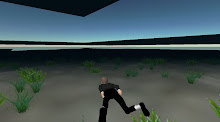I used to think that Foucault was difficult to read and understand and often beyond my ken. That changed when I first read his Heterotopias and then Panopticon. A third piece now joins the other two: Truth and Power, from Power/Knowledge. Although sections sometimes become dense and intellectual, Foucault tends to communicate with his able interviewers, Alessandro Fontana and Pasquale Pasquino, in ways that reveal a somewhat cocky self-awareness and yet maintain a measure of transparency.
Truth and Power was transcribed in 1977, the year that the computer came of age as a mature product ready for broad distribution. Apple was incorporated that year, and Apple, Radio Shack and Commodore began mass-marketing computers. Apple II also introduced the first color graphics on a PC (http://www.computerhope.com/history/196080.htm). Foucault must have been thinking about these developments, but even if he was not, his deliberations concerning medical practices preceded today’s wired reality in a sort of sonar blip:
…[W]ith the ways of speaking and seeing, the whole ensemble of practices which served as supports for medical knowledge. These are not simply new discoveries, there is a whole new ‘regime’ in discourse and forms of knowledge. And all this happens in the space of a few years. My problem was not at all to say, ‘Voila, long live discontinuity, we are in the discontinuous and a good thing too’, but to pose the question, ‘How is it that at certain moments and in certain orders of knowledge, there are these sudden take-offs, these hastening of evolution, these transformations which fail to correspond to the calm, continuist image that is normally accredited?’ (112)
Moreover, Foucault goes on to ask “why at certain moments that regime undergoes a global modification? ” (113) Technological advance is one answer to that “why” question. With invention and innovation come what Giddens in Agency, Structure calls time-space intersections:
I regard as a fundamental theme of this paper, and of the whole of this book, that social theory must acknowledge, as it has not done previously, time-space intersections as essentially involved in all social existence. All social analysis must recognize (and itself takes place in) not just a double sense of differance, but a threefold one...Social activity is always constituted in three intersecting moments of difference: temporally, paradigmatically (invoking structure which is present only in its instantiation) and spatially. All social practices are situated activities in each of these senses. (54)
Giddens’ labeling of the “three intersecting moments of different” varies from that of Henri Lefebvre’s trialectics of being (spatiality, sociality, historicality; from The Production of Space) and Edward Soja’s trialectics of spatiality (lived, conceived, perceived; from Thirdspace) in that the concept of time is invoked in the three intersecting moments of difference (dare I call this the trialectics of difference?). However, feminist geographer Doreen Massey includes time in her discussion of space (Space, Place, and Gender), a topic that could stand more scrutiny.
But back to the main point now—the purpose of reading Foucault and Giddens is to find an intersection between the two, as well as other readings, that will help inform teaching with technology. Foucault’s study of truth and power suggests a strong connection:
What makes power hold good, what makes it accepted, is simply the fact that it doesn’t only weigh on us as a force that says no, but that it traverses and produces things, it induces pleasure, forms knowledge, produces discourse. It needs to be considered as a productive network which runs through the whole social body, much more than as a negative instance whose function is repression. (119)
Giddens, however, says that “[i]t is not enough just to stress the need in social theory to relate the constitution and communication of meaning to normative sanctions; each of these has in turn to be linked to power transactions. This is so in the twofold sense indicated by the term duality of structure” (83). My first reaction is to call for a third, which Lukes does, but Giddens buries it in the text in overt disagreement (89-91).
Question 1: Does Giddens’ refusal to accept a third element in power transaction create an unnecessary binary—duality of structure?
Question 2: How does Gidden’s discussion of power and agency (92) compare to the same topical discussion by other authors (say, by historians such as Patricia Limerick)?

![Sig[h]ns](http://bp1.blogger.com/_RkYu0NE8-5U/R6frnRz_BfI/AAAAAAAAABw/ymFHpLR09Ro/S220/U.K.,+Beauty+Lou,+Chelsea,+Coeur+d+Alene+463.jpg)
1 comment:
You point to one of my favorite Foucault quotes:
What makes power hold good, what makes it accepted, is simply the fact that it doesn’t only weigh on us as a force that says no, but that it traverses and produces things, it induces pleasure, forms knowledge, produces discourse. It needs to be considered as a productive network which runs through the whole social body, much more than as a negative instance whose function is repression. (119)
I think both Foucault and Giddens acknowledge that power isn't a negative thing for, if it were, nobody would ever strive to attain it. Giddens, w/ his duality of structure, also acknowledges how we always act within power structures while reaffirming those power structures--yet, there is always the possibility of unintended consequences. I'm never sure if this is enough though....and after rereading Giddens for the Xth time, I have to say I just don't quite see him as I used to. Cindy Selfe thought he offered agents the possibility to work in and reform structures, but after reading him again....I dunno....he seems sort of restricting in his understanding of human agency.
...look here, you got me thinking--the sign of a good blog post :)
Thanks Donna.
Post a Comment